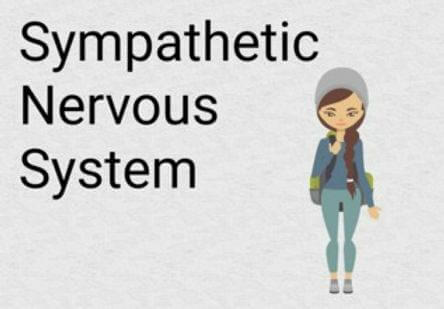Author: Randeep Singh / go to all articles on Yoga cure
Sympathetic Nervous System Activation:
Autonomic nervous system is the network of neurons – nerve cells –, which are responsible for the receiving, processing, and responding to the impulses automatically, without the involvement of the involvement of the brain.
Most of the automated responses are handled at the spinal cord levels itself, sections of the brain (thinking) do not have any role to play in its functioning.
This system comprises of two major, but antagonistic subsystems; parasympathetic nervous system, and the sympathetic nervous system. Yoga for sympathetic nervous system activation works on the second subsytem.
The parasympathetic nervous system has calming, relaxing effect on the body while the sympathetic nervous system is responsible for the opposite effect to it, inducing alertness, and preparing the body for handling exigencies by activating the flight or fight response. The construct of the sympathetic nervous system originates as shorter preganglionic neurons in the thoracic spine region which synapse – join- with the post ganglionic neurons in a ganglia.
The longer post ganglionic neurons join to reach the remotest corners of the body. The sympathetic impulse is relayed through these neurons via a series of chemical, or neurotransmitters released at different sections of this relay, each one being activated by the previous chemical released.
Preganglionic neurons release acetylcholine at the synapse in the ganglia, which to actuate the nicotinic acetylcholine receptors located on the postganglionic neuron. These activated receptors release norepinephrine which actuates specific receptors on the target tissues for evincing the desired response.
The efferent messages – the chemical impulses which travel from the spinal cord to the target tissue – stimulate processes like increasing the heart rate, shutting off the digestive system, dilate the bronchial tubes for accommodating more oxygen rich air, dilate pupils, constrict the blood vessels for spiking the blood pressure, and activating perspiration.
Afferent messages are the signals which travel from the receptors of the external threats to the spinal cord for eliciting the efferent response from it. Sympathetic nervous system is responsible for maintaining a balance state – homeostasis – within various organ systems within the body.
The sympathetic responses are about action, like the ones which get activates just before one wakes up from a long slumber , or relaxation state of the body which is antagonistic to the sympathetic response.
The sympathetic response of flight or fight is actuated by diverting the flow of blood – constricting the blood vessels leading to – from the organ activities which are not essential for survival to the ones which will feed the physical intensity of the flight ,or fight response.
An over active sympathetic nervous system can overshoot the heart rate causing failure of the heart functions, cause vascular spasms, and hypertension.

Yoga for sympathetic nervous system
Sympathetic nervous system activation with yoga has been found to reduce the resting heart rate, along with the reduction in the systolic and diastolic blood pressure in human body. The reduction in the parameters of the cardio vascular system is an indicator of the homeostatic tendency of the sympathetic nervous system.
Yoga poses to calm the nerves work by applying the brakes on the sympathetic responses in the body, the overall blood pressure is lowered, reduction of anxiety , and restlessness. The yoga for stress relief help restore the balance between the working of the parasympathetic nervous system , and the sympathetic nervous system, this imbalance is created due to the slowing down of the gamma aminobutyric acid system, and the enhanced allostatic load while the body responds to an external stressor.
The activities of the parasympathetic nervous system and the gamma amino-butyric system receive a balancing against the hyperactive sympathetic system boost as the yoga for vagus nerve stimulates the vagus nerve, a nerve which is central to the working of the autonomic nervous system which comprises of the parasympathetic, and sympathetic nervous systems. Conditions like epilepsy and depression have been found to respond positively to the stimulation of the vagus nerve.
Pranayama for sympathetic nervous system in conjunction with the yoga asana help restore the bodies neutral rhythm of action – sympathetic nervous system – and rest – parasympathetic nervous system- which accelerates the healing of the stress related disorders like heart issues, malfunctioning endocrine system, and problems related to digestion.
Sympathetic nervous system is about activating the body systems in preparation for a possible action which is critical for one’s survival. Yoga helps keep the stress response – sympathetic nervous system – within healthy parameters, regular practice of yoga for sympathetic nervous system reduces the life threatening stress that the body can experience sometimes, this keeps the sympathetic nervous system from over blasting which may lead to a number of health hazards.
Yoga exercises which subdue stress help keep the stress response system of the body also subdued. Increased heart rate and suspension of digestion – a vital function – for longer periods as instigated by the activated sympathetic nervous system can lead to a number of life threatening medical disorders.
Yoga poses for a healthy sympathetic response
More interesting articles….
Yoga for Eosinophilia condition

